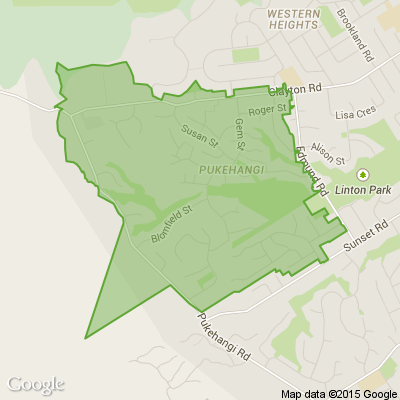Cat Allergy
What is cat allergen?
An allergen is a material that is capable of provoking an allergic reaction, such as pollen grains, dust mites or foods. Cat allergen is not cat hair, but a protein present in the dander and saliva of cats. These allergens become airborne as microscopic particles that can produce allergic symptoms when inhaled into the nose or lungs.
Although individual cats may produce more or less allergen, there is no relationship between the pet’s hair length and allergen production, and no such thing as a non-allergenic breed.
Where is cat allergen found?
Cat allergen is present in the largest amounts in homes with cats, but has also been found in homes where cats have never been present, and in offices or public spaces where animals are not allowed. Cat allergen is particularly sticky and is carried on clothing to other locations. It is almost impossible to not be exposed to some level of cat allergen. Of course, levels of exposure will be much higher where cats are present, and these levels are more likely to cause allergic symptoms.
Because cat allergen particles are particularly small (1/10 the size of dust mite allergen), they remain airborne for prolonged periods of time. Cat allergic individuals are more likely to have a rapid onset of symptoms when entering a room with cats, because the allergen will be in the air and can be easily inhaled. Opening windows, using exhaust fans and using high-efficiency air cleaners can decrease airborne allergen levels.
Soft furnishings, such as carpets, sofas, and mattresses, will hold cat allergen even after a cat is removed from the home or banished from the bedroom. It has been shown that it can take as long as 20 weeks for levels of allergen in carpets to decrease to the levels found in a home without a cat, and up to five years for cat allergen levels in mattresses to decrease to such levels. Removal or treatment of the carpet and sofa, and encasing of the mattress, will reduce the continued exposure to these reservoirs of allergen.
Cat allergen is also found on vertical surfaces such as walls. Attempts to decrease cat allergen exposure in a home should include wall cleaning. If the cat is removed to a restricted area of the home, it is important to realise that airflow through the duct system in a hot air heated home could spread the allergen. Efficient vent and furnace filters could help trap the allergens and reduce this spread.
Step 1: Use Allergen Wash. To get all the cat saliva and dander off your clothing and bedding, use a special detergent that removes all allergens. Use the warmest water setting possible for the fabrics to get all of the saliva and dander out.
Step 2: Use a vacuum with a high efficiency air filter. These filters remove more allergens from the carpeting and upholstery than regular vacuums. Vacuum all the floors and furniture thoroughly to get everything out. Wait several hours after the first vacuuming and go over everything again. This allows the dust you stir up the first time to settle, and you get the remnants of that dust on the second vacuuming. Make sure to empty the vacuum or change the bag outside to prevent everything you vacuumed from coming back in.
Step 3: Steam clean. After vacuuming everything completely, go over the whole area with a steam cleaner. The steam cleaner gets more of the allergens out of the carpet than the vacuum, picking up the cat saliva and dander deeper in the fibres.
Step 4: Take it to the cleaners. Take things you can't wash, such as curtains, to the cleaners. Cleaning will remove the cat saliva and dander from the fabrics. Curtain Clean has a special product used to remove cat allergen. You should advise your curtain or dry cleaners of your allergy so they may apply the correct product.
Step 5: Keep the cats off your fabrics. As soon as the cats get close to any of the fabrics, the dander and saliva will return. Studies have demonstrated that washing of cats with water removes much of their surface allergen, and significantly reduces the amount of future cat allergen produced.
We want to know: Have you thought about cutting your insurance cover to save costs?
Senior business reporter Rob Stock tackles a big question many of us have wondered about: “What are the pros and cons of cutting back on insurance?”
So we’re curious… What are your thoughts on trimming your insurance cover? Have you ever considered it?
Want to dive deeper? Rob Stock has the full breakdown.

Neighbourhood Challenge: Who Can Crack This One? ⛓️💥❔
What has a head but no brain?
Do you think you know the answer? Simply 'Like' this post if you know the answer and the big reveal will be posted in the comments at 2pm on the day!
Want to stop seeing these in your newsfeed?
Head here and hover on the Following button on the top right of the page (and it will show Unfollow) and then click it. If it is giving you the option to Follow, then you've successfully unfollowed the Riddles page.

Boxing Day Alert! Grab a Mattress That Feels Out of This World
Ever wondered what it’s like to sleep on a mattress designed by NASA? Tempur started in space, and now it’s here to give you next-level comfort right at home!
Imagine a mattress that cradles every curve, reduces pressure, blocks your partner’s tossing and turning, and lasts for years. Side sleeper, back sleeper, or somewhere in between - there’s a Tempur just for you.
Even better? Perfect timing! Our Boxing Day Sale is happening now! It’s the perfect chance to grab your dream mattress and upgrade your sleep before the year ends.
Find your nearest Beds4U store: beds4u.co.nz...
Browse all Boxing Day deals: beds4u.co.nz...
Want to learn more about Tempur mattresses before you buy? Check out our guide here: beds4u.co.nz...
Neighbours, your dream bed is waiting - don’t let another sleepless night pass!










 Loading…
Loading…



















